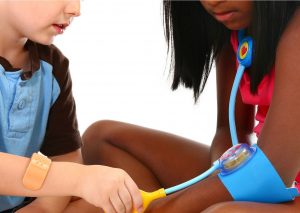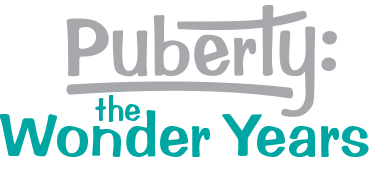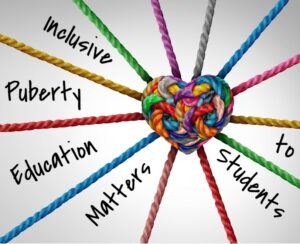As the school year starts to become more routine than new, children begin feeling more confident and comfortable in their surroundings. Peer relationships develop, and signs of mild or overt sexual behavior may appear. Children in late childhood – 9 to 12 years old – sometimes begin to hide sexual behavior from their families. At this stage, children have learned that some words and behaviors aren’t socially acceptable or welcomed by their families, so they take a quieter approach to sexual development. However, children in late childhood stage become more curious and independent. So, they begin to seek information from the media and their peers regarding sexual exploration, body development, and gender roles and expression.
This is an interesting age to be sure, and as a parent or beginning educator, you may be wondering what to expect during these stages of social and physical development in late childhood. Puberty: The Wonder Years is here to help.
Healthy Sexual Development in Late Childhood
- What kind of sexual behavior might I expect to see?
- What is natural and healthy?
- What kind of parent or educator reaction is healthy?
These questions are completely normal, but sometimes difficult to answer. That’s because much of the research conducted on childhood sexual development has focused on children that were involved in some form of sexual mistreatment. This means most of the information we have describes the signs of unhealthy sexuality in children and direct indications of abuse. Puberty: The Wonder Years author, Wendy Sellers, recently created a tool to help parents and educators better understand what healthy sexual behaviors to expect as children enter late childhood.
This Is Your Reference Chart
The “Promoting Healthy Sexual Development: Late Childhood” chart outlines typical behaviors one might expect from children aged 9-12 including:

- Increased need for privacy or independence
- Interest in relationships or having a boy/girlfriend
- Increased sexual interest in peers
- Game playing such as “Truth or Dare” or “Spin the Bottle”
- Interest in online chatting
- Beginning to have a sexual orientation
- Curiosity about adult bodies
- Watching or listening to media with sexual content
- Interest in masturbation
The chart also outlines how parents and educators can provide needed support and encourage sexually healthy children. As children reach these formative milestones and go through these late childhood physical changes in their journey towards adulthood, we encourage you to use this chart as a guide within your home or classroom, helping you initiate important conversations and encourage healthy sexual exploration.
Take Learning and Development One Step Further with Puberty: The Wonder Years
Our well-rounded curriculum provides teachers with relevant, easy-to-use lessons that can be implemented in all classrooms. We have integrated family engagement strategies into the lessons as well, building trust and support between the classroom and the home, and facilitating healthy sexual development in children through intentional puberty education. We provide a way for teachers and parents to work together to teach about puberty, equipping adults with tools and information that help them feel more comfortable talking with their children and students about the physical and emotional changes that are on the horizon.
Learn more about our approach to puberty education. Hear four educators tell why they chose this curriculum and the benefits they have experienced! If you’d like to learn more about Puberty: The Wonder Years, and how it helps educate children about puberty and relationships, contact us anytime.
Sign up to receive a FREE sample lesson to see what Puberty: The Wonder Years is all about.
Read more: Adolescent Development Explained, CDC
updated 2023-5-22



